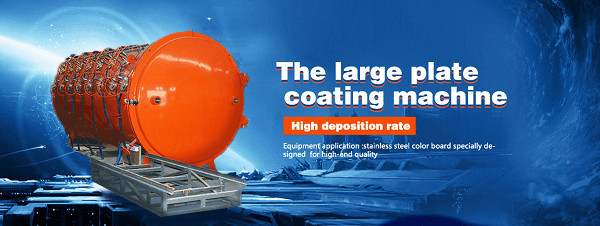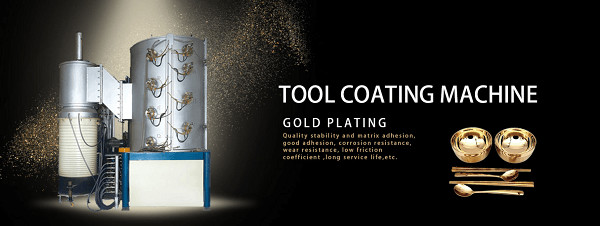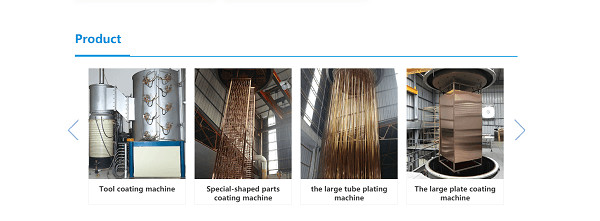Study on the interface microstructure of Ti-Al-Si-N coating
The Ti-Al-Si-N coating is prepared by a multi-element plasma immersion ion implantation and deposition device, and the coating interface microstructure is studied by X-ray diffractometer, X-ray photoelectron spectroscopy, transmission electron microscope, nanoprobe and atomic force microscope. Structure and mechanical properties. The research results show that the Ti-Al-Si-N coating has a Si3N4 interface phase wrapped TiAlN nanocrystalline composite structure, and Si element doping induces a significant grain refinement effect in the coating. With the increase of the Si content of the coating, the grain size of TiAlN decreases significantly, and the thickness of the interface Si3N4 layer increases. When the thickness of the Si3N4 interface layer is less than 1nm and co-epitaxial growth with TiAlN grains, the Ti-Al-Si-N coating exhibits ultra-high hardness of about 40GPa. When the thickness of the Si3N4 interface phase increases to 2nm and exists in an amorphous state, The coating hardness drops to about 29 GPa.
vacuum coating machine,pvd coating machine,pvd vacuum machine,vacuum ion coating machine,multi-arc ion coating machine
In recent years, TiN coating has been widely used to improve the surface anti-wear ability of equipment parts, but its thermal stability and high-temperature oxidation resistance are poor. When the service temperature exceeds 550°C, the wear-resistant life of the coating is significantly reduced. Studies have shown that the doping of Al and Si elements can significantly improve the high-temperature oxidation resistance and thermal stability of TiN coatings. TiAlN or TiAlSiN composite coatings have caused industry due to their ultra-high hardness, good thermal stability and high-temperature wear resistance. The community pays wide attention. Researchers use theoretical calculations and numerical simulation systems to study the influence of Si content on the microstructure of TiSiN coatings. The study found that as the Si element content in the coating increases, the grain size of the coating decreases significantly. In addition, for the super-hard mechanism of TiSiN coatings, the current reasonable explanation is based on the theoretical model of "amorphous wrapped nanocrystals" proposed by Veprek, that is, when nc-TiN is wrapped by a very thin layer of a-Si3N4, the strong interface can effectively prevent Grain boundary slip and dislocation movement, the coating obtains ultra-high hardness. Obviously, the size and structure of the Si3N4 amorphous phase at the coating interface have an important impact on the mechanical properties of the coating. However, the Vacuum Technology Network (http://www.chvacuum.com/) believes that the current research on the microstructure of the coating interface is mostly based on theoretical calculations of grain size and phase content and molecular dynamics simulations, and there is still a lack of direct observational evidence.
This research group successfully prepared Ti-Al-Si-N coatings using a multi-element plasma immersion ion implantation and deposition (MPIIID) device and found that the coating has good thermal stability and oxidation resistance. This research will further study Ti with different Si contents -Al-Si-N coating interface microstructure characteristics and mechanical properties, expounding the correlation between the evolution mechanism of the coating microstructure and the superhard effect.
vacuum coating machine,pvd coating machine,pvd vacuum machine,vacuum ion coating machine,multi-arc ion coating machine
1. Experiment
In this study, the MPIIID device was used to prepare the Ti-Al-Si-N coating. The device was equipped with 4 cathodes. Each cathode was controlled by a separate discharge power supply and trigger power supply. The discharge current can be individually adjusted by controlling the pulse width of the power supply to achieve coating formation. The distribution ratio is regulated in a wide range. The test substrate used W18Cr4V steel and silicon wafers. The samples were mechanically ground with metallographic sandpaper and polished to a mirror surface, and ultrasonically cleaned with acetone and analytical alcohol for 10 minutes, respectively. The target material uses titanium (99.9%) and silicon aluminum (70:30 (mass ratio)), and high-purity N2 is the reaction atmosphere.
The coating preparation parameters are as follows: N2 flow rate 50mL/min (standard state), air pressure 0.3Pa, bias voltage 20kV, pulse frequency 50Hz, high-pressure pulse width 60μs, the Si content in the coating is achieved by adjusting the pulse width of different metal cathodes. Use X-ray energy spectrometer (EDX) to analyze coating composition, use X-ray diffractometer (XRD, Philips-X’ pert) to analyze coating phase composition, use X-ray photoelectron spectroscopy (XPS, Thermo, K-Alpha) Analyze the bonding valence state of coating elements. In order to avoid the interference of surface oxides, data was collected after 60s of sputtering. Transmission electron microscope (TEM, FEI-Tecnai-30) was used to analyze the microstructure and interface characteristics of the coating, and the coating was deposited On the 20μm aluminum foil, use an alkaline solution to dissolve the aluminum foil, and use a micro-grid copper mesh to lift the coating for TEM observation. A nano probe (NanoIndenter G200, MTSCorp.USA) was used to test the mechanical properties of the coating, and the indentation morphology of the coating was observed in situ by means of an atomic force microscope (AFM).
vacuum coating machine,pvd coating machine,pvd vacuum machine,vacuum ion coating machine,multi-arc ion coating machine
3. Conclusion
This paper systematically studied the interface microstructure and mechanical properties of Ti-Al-Si-N coatings with different Si contents. The main conclusions include:
(1) The Ti-Al-Si-N coating has a typical composite structure of TiAlN nanocrystals and Si3N4 interface phase. Si doping induces the evolution of the coating microstructure. As the Si content in the coating increases, the TiAlN grain size decreases. The grain interface spacing increases.
vacuum coating machine,pvd coating machine,pvd vacuum machine,vacuum ion coating machine,multi-arc ion coating machine
(2) When the Si content is low, the Si3N4 interface phase thickness is less than 1nm and tends to exist in a crystalline state; when the Si content is high, the Si3N4 interface phase thickness reaches 2nm and exists in an amorphous form.
(3) Ti-Al-Si-N coating micro-interface microstructure characteristics determine its mechanical properties. When the Si3N4 interface phase thickness is less than 1nm and exists in a crystalline state, the Ti-Al-Si-N coating exhibits ultra-high hardness About 40GPa, when the Si3N4 interface phase thickness increases to 2nm and exists in an amorphous state, the interface strengthening effect is weakened, resulting in the coating hardness being reduced to 29GPa.
Founded in 2015,Zunhua Baorui Titanium Equipment Co.,Ltd. is a manufacturer specializing in pvd vacuum ion coating equipment. The company’s products mainly include large plate coating machine, large tube collating machine, tool coating machine and LOW-E glass production line. Mr.Wang baijiang ,general manager of the company ,has been engaged in vacuum coating industry for more than 30 years. He continuously improve production technology, improve product performance and devote himself to provide customers with better product experience and higher production efficiency.





